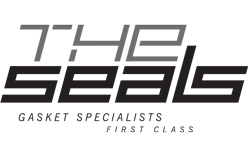Cutting Boards
No Wait | Cut To Size | Custom Fit | FDA & NSF Certified
Cutting boards in commercial kitchens endure heavy use and can quickly show signs of wear and tear. Frequent cutting, chopping, and cleaning can cause cracks, grooves, and deep cuts on the surface of the board. These areas can harbor bacteria, making it difficult to effectively clean and sanitize the board.
THE SEALS can help prevent cross-contamination through our multi-color-coding system. We can change or resurface cutting boards on pre-determined schedules to keep your kitchen fresh and clean. We offer excellent color selections for keeping cutting boards organized.

Do you have the right kind of cutting board for the job?
Do you have the right kind of cutting board for the job? Absorption of Liquids and Odors can lead to persistent odors and staining, even after cleaning. It can also create a breeding ground for bacteria, making it challenging to maintain proper hygiene.
Change your cutting boards out on a regular schedule. Over time, cutting boards can warp due to exposure to heat, moisture, and constant use. Warped cutting boards have uneven surfaces, which can affect the stability and safety of cutting tasks. Uneven surfaces can cause knives to slip or wobble during cutting, increasing the risk of accidents and injuries.
When it comes to cutting boards, less is not more! An inadequate size or number of cutting boards can hinder workflow efficiency in a commercial kitchen. If the cutting boards are too small, it can be challenging to work with larger food items, resulting in slower preparation times. Similarly, if there aren’t enough cutting boards available, it can cause delays in food preparation and potentially compromise food safety practices.
Harsh cleaning chemicals or subjecting cutting boards to extreme temperatures can damage the material and reduce its lifespan. THE SEALS encourage our customers to adopt regular resurfacing, replacement, maintenance, and cleaning practices. Inconsistent or improper cleaning and maintenance of cutting boards can contribute to various issues. If cutting boards are not cleaned promptly and thoroughly after each use, bacteria can multiply and contaminate subsequent food items. Additionally, using harsh cleaning chemicals or subjecting cutting boards to extreme temperatures can damage the material and reduce the lifespan of a cutting board.
Best Practices for Cutting Boards




